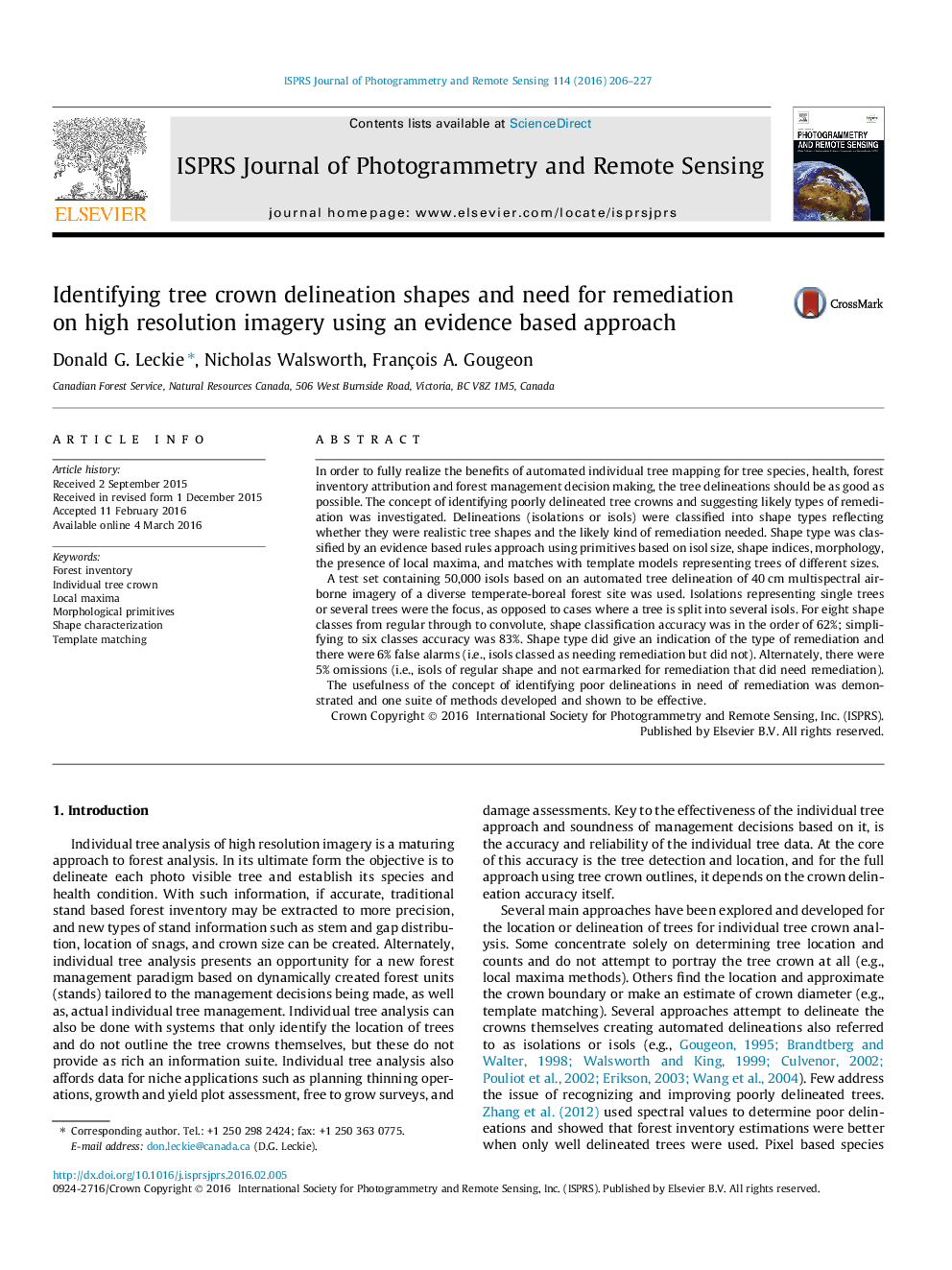| Article ID | Journal | Published Year | Pages | File Type |
|---|---|---|---|---|
| 555877 | ISPRS Journal of Photogrammetry and Remote Sensing | 2016 | 22 Pages |
In order to fully realize the benefits of automated individual tree mapping for tree species, health, forest inventory attribution and forest management decision making, the tree delineations should be as good as possible. The concept of identifying poorly delineated tree crowns and suggesting likely types of remediation was investigated. Delineations (isolations or isols) were classified into shape types reflecting whether they were realistic tree shapes and the likely kind of remediation needed. Shape type was classified by an evidence based rules approach using primitives based on isol size, shape indices, morphology, the presence of local maxima, and matches with template models representing trees of different sizes.A test set containing 50,000 isols based on an automated tree delineation of 40 cm multispectral airborne imagery of a diverse temperate-boreal forest site was used. Isolations representing single trees or several trees were the focus, as opposed to cases where a tree is split into several isols. For eight shape classes from regular through to convolute, shape classification accuracy was in the order of 62%; simplifying to six classes accuracy was 83%. Shape type did give an indication of the type of remediation and there were 6% false alarms (i.e., isols classed as needing remediation but did not). Alternately, there were 5% omissions (i.e., isols of regular shape and not earmarked for remediation that did need remediation).The usefulness of the concept of identifying poor delineations in need of remediation was demonstrated and one suite of methods developed and shown to be effective.
